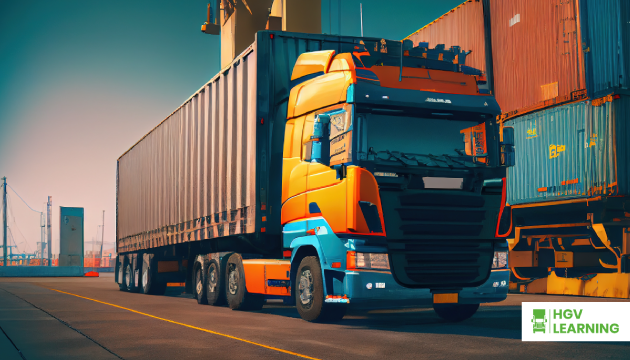
28/10/2025
Drivers must hold an ADR licence to transport hazardous goods such as fuel, chemicals, gases and flammable liquids. Carrying these loads without the correct licence is illegal. As a result, ADR training with HGV Learning is essential for anyone entering this area of work.
Our courses prepare drivers to pass the official exams and to manage dangerous substances safely in real-world situations. In addition, training gives learners the confidence to deal with emergencies and meet all regulatory standards.


ADR refers to the European Agreement concerning the International Carriage of Dangerous Goods by Road. In the UK, drivers carrying hazardous loads must complete ADR training and hold a valid qualification. Therefore, this licence shows that a driver understands the legal framework and can handle hazardous loads responsibly.
We teach both the regulations and the practical skills needed on the job. For example, our instructors explain how to identify hazard classes, complete documentation and use protective equipment. This balance of theory and practice ensures drivers are prepared for real-world conditions.
Many learners take ADR training alongside a Cat C licence or a C+E licence, as these categories allow them to operate the larger vehicles used in dangerous goods transport.
To apply for an ADR licence, drivers must hold a full UK driving licence. Learners then complete training with an approved provider and sit exams for each chosen module. At HGV Learning, our team helps drivers decide which modules are relevant to their career.
ADR training includes the following modules:
While not every driver needs all modules, each qualification must match the type of work they plan to do. Professional drivers will also require Driver CPC training to stay compliant.
Courses usually take between three and five days, depending on the modules chosen. During this time, drivers take part in classroom lessons, practical examples and exam preparation. At the end of each module, they complete a written or computer-based test.
Training covers a wide range of essential topics, including:
Therefore, drivers finish the course with the knowledge and skills required to carry hazardous loads safely and legally.
An ADR licence opens up career options in several industries. For example, employers in the following sectors often hire qualified ADR drivers:
As a result, ADR-certified drivers are in demand and often benefit from higher salaries. Many of our learners also combine ADR training with a C1 licence or Cat C licence to expand their opportunities even further.
ADR licences remain valid for five years. Drivers must complete a refresher course and re-sit exams before their qualification expires. In addition, ADR training counts towards the 35 hours of periodic Driver CPC training required every five years.
HGV Learning runs ADR training at centres across the UK. Courses are scheduled throughout the year, making it easier for drivers to fit training around existing commitments. Because course length and price depend on the chosen modules, we recommend contacting our team for a tailored quote.
Complete the form below and we’ll contact you asap.


We understand that every driver has different learning needs, which is why we offer flexible training options, including online and in-person training. Our course allows drivers to study at their own pace, while our training offers the opportunity for drivers to interact with their instructors and receive personalised attention.
Drivers must hold an ADR licence to transport hazardous goods such as fuel, chemicals, gases and flammable liquids. Carrying these loads without the correct licence is illegal. As a result, ADR training with HGV Learning is essential for anyone entering this area of work.
Our courses prepare drivers to pass the official exams and to manage dangerous substances safely in real-world situations. In addition, training gives learners the confidence to deal with emergencies and meet all regulatory standards.
A C1 licence allows drivers to operate vehicles between 3,500kg and 7,500kg, such as ambulances, delivery trucks and removal vans. Training with HGV Learning covers both the theory and practical tests, ensuring you are ready to drive these vehicles safely and professionally.
A C+E licence, also known as a Class 1 HGV licence, allows drivers to operate the largest and most complex commercial vehicles. This includes articulated lorries and other combinations where the trailer exceeds 750kg. It is the next step up from a Cat C licence and is essential for long-distance and international haulage roles.
A cat C licence allows an individual to drive medium-sized lorries, also known as rigid vehicles, with a maximum weight of around 32 tonnes.
This type of commercial driver’s licence is a requirement for operating vehicles that are commonly used for transporting goods and materials over medium distances.
Hiab training is essential for drivers who operate lorry-mounted cranes used to load and unload heavy goods. These cranes are common in construction, utilities and logistics, where safe handling of equipment and materials is a daily requirement. Our courses prepare drivers to use Hiab vehicles safely and to meet industry accreditation standards.
A telescopic handler, often called a telehandler, is one of the most widely used machines in construction, agriculture and logistics. It combines the features of a forklift and a crane, making it versatile for lifting, moving and placing loads. Our telescopic handler training prepares learners to operate this equipment safely and to gain recognised certification for employment in these industries.